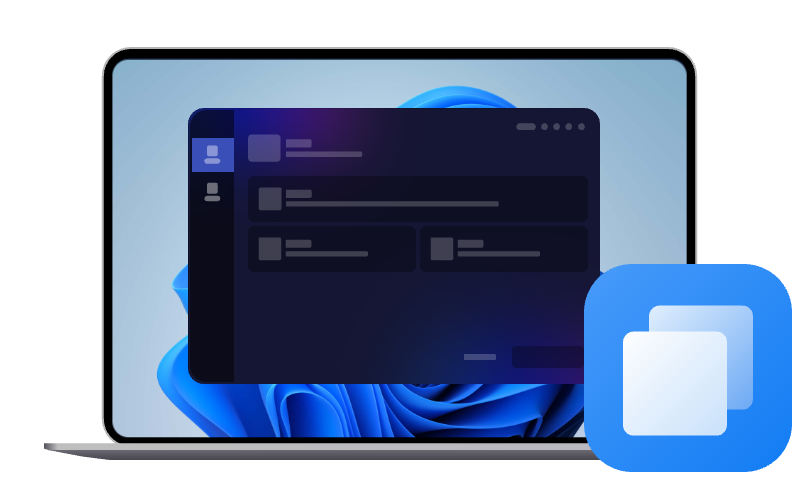Windows OS Cloning Software Full Guide in 2025 (FREE vs Paid)
In this guide, you will learn whether or not Windows 10/11 comes with Windows OS cloning software, what it is, the best options, and how to use it. Scroll down to explore more.
How do I clone my laptop boot drive?
I’m running Windows 10 and looking to clone my laptop's HDD boot drive (and all its partitions) onto an equally sized SSD, and put that in my laptop to use as the boot drive. I will then format the HDD and use it as extra storage.
I have an HDD caddy and I plan to take my HDD from my laptop and put it in the caddy on my main PC, plug in the SSD in, and clone it onto the SSD...but I need a free cloning software that can do that for me, allow me to plug in the cloned SSD to my laptop and it be like barely anything has changed. Thanks!
- Question from Reddit
Does Windows 10 have a cloning tool?
No, Windows 10 does NOT include a dedicated Windows OS cloning software. But hold up, it does offer a system image backup tool, Backup and Restore (Windows 7), that’s kind of similar, and creates a full backup image of your OS, programs, and files.
You can find it in the Backup settings or directly search its name. It's not really a clone, though, and there are some differences between them:
- It will compress all the data into an image file instead of 1:1 exact copy.
- You can’t boot from the image file, that is for restoration only.
- It requires a Windows installation disc or recovery disk to restore image file in the recovery environment.
- You can’t restore Windows image to smaller drive.
- You can’t restore to new hardware, i.e., the source and target disk have different partition styles ( one GPT, one MBR).
- You can’t resize partition size on the destination disk.
- It’s slower than cloning.
What’s the best Windows OS cloning software?
Cloning Windows OS creates an exact copy of the system partition, usually the C: drive, including the operating system and boot files required to start Windows. The installed programs and all of your data are there. More importantly, the cloned drive is still bootable. Thus, you can directly boot from it without restoring first.
But what’s the best Windows OS cloning software? You could consider using DiskGenius or AOMEI Cloner, and here is a side-by-side comparison table between them below:
|
Feature |
DiskGenius |
AOMEI Cloner |
|
|
Free |
Standard |
||
|
Ease of use |
Advanced, technical UI |
Advanced, technical UI |
Simple, easy-to-use interface |
|
Supported OS |
Windows XP/Vista/7/8/8.1/10/11 |
Windows PCs and Servers |
Windows PCs and Servers |
|
Price |
Free |
$69.9 |
$39.95 per year and $59.95 lifetime |
|
Clone system disk |
√ |
√ |
√ |
|
Resize Partitions |
Manual |
Manual |
Automatic |
|
Clone to smaller drive |
√ |
√ |
√ |
|
Sector by sector clone |
X |
X |
√ |
|
4K SSD alignment |
X |
X |
√ |
|
WinPE bootable media |
√ |
√ |
√ |
|
Set UEFI disk boot sequence |
√ |
√ |
X |
|
Free Tech support |
X |
√ |
√ |
|
👑 Best for |
Advanced users, basic clone |
Advanced users, basic clone |
Beginners, quick upgrade |
In terms of features, DiskGenius will be a great choice if you are looking for free Windows OS cloning software or basic clones. While AOMEI Cloner is an all-in-one cloning software and more suitable for everyday users, especially those using modern UEFI systems.
How to migrate Windows from HDD to SSD without reinstalling
Here we’ll introduce you to two Windows OS cloning software - DiskGenius and AOMEI Cloner, and how to use them.
Option 1: Migrate OS to SSD using DiskGenius
Before starting, you need to download DiskGenius from its official website and install it on your computer. Please don’t install it on the new SSD if you want to continue using your computer without any interruption.
Step 1. Connect the target SSD as well and be sure it’s recognized. Launch DiskGenius after installing it. Then, click Tools > System Migration. You can also click OS Migration in the toolbar.
Step 2. In the pop-up window, select the new SSD as the target disk and click OK. All files and partitions on the target disk will be overwritten. Please be sure you select the right drive and backup files if there is any important data. Then, click OK to continue.
Step 3. Drag the arrow between partitions to the left or right to adjust the partition size on the destination disk. Then, click the Start button and OK to confirm you want to migrate OS to SSD.
- ✍️Notes:
- If you don’t adjust the partition size on the destination disk, the remaining space will be shown as unallocated. Otherwise, you can’t use it unless you manually resize it in Disk Management.
- Additionally, if you are using the modern UEFI, you can set whether or not to change the boot sequence.
Step 4. Select the system migration method - Hot Migration (Recommended) or Reboot to WinPE. The previous option will migrate OS on the current system without shutting it down, while the latter one will reboot to the Windows pre-installation recovery environment.
Now, you just need to wait for system migration. If you install DiskGenius on the target SSD, it will take much longer as it needs to create a WinPE boot file first.
However, sometimes, you will need a DiskGenius alternative, especially for newbies. Here are some of its limitations:
- It has a very complex interface with scattered functions.
- It requires resizing partitions manually and is prone to errors.
- It lacks 4K alignment, which is essential for SSD performance and longevity.
- The sector-by-sector clone feature is not included in OS migration (all versions of DiskGenius).
- The free edition does not support server operating systems.
- Some users still report that it has insufficient support for UEFI systems and some NVMe protocols.
Option 2: Migrate Windows from HDD to SSD using AOMEI Cloner (Worry-Free)
AOMEI Cloner is a simple and worry-free Windows OS cloning software that can migrate operating systems from HDD to SSD in Windows 7, 8, 10, 11 and Windows Servers without boot issues. It will include the operating system, system files & settings, installed programs, your data, etc.
❤❤❤ Why Choose AOMEI Cloner?
- 👑Bootable clone - Clone HDDs/SSDs or MBR/GPT system disk with secure boot.
- Intelligent clone (default) - only clone the used sectors of a drive, making it easier to clone OS from large HDD to smaller SSD without capacity issues. You can also clone OS sector by sector.
- Make full use of disk space - clone OS from hard drive to larger drive without unallocated space left, either HDD or SSD.
- SSD Alignment - align SSD with 4k technology to improve performance and longevity.
- Disk compatible - compatible with Samsung, WD, SanDisk, Crucial, etc., whether they are NVMe, PCIe, M.2, SATA, or mSATA. Learn More »
Now, click the download button to get started. Please connect the target SSD to your computer and be sure it’s recognized.
Step 1. Open AOMEI Cloner after installing. Then, click Clone > System Clone subsequently.
Step 2. You will then be asked to select the destination disk. Select the first partition on the prepared SSD and click Next.
- ⛔Warning: The partition will be overwritten or deleted. Please backup them if there is any important data on this partition. If not, click OK to continue.
Step 3. Be sure to check SSD Alignment to align HDD and SSD for better performance. You can also enjoy the Make Full Use of Disk Space feature if the target SSD is larger. Then, click Start Clone to migrate OS from HDD to SSD.
By default, this software will enable the intelligent clone feature that clones only the used sectors of a drive. It can avoid the cloned SSD won’t boot issue to the greatest extent possible (if it’s smaller). After cloning, you need to replace HDD with SSD and set the new SSD as the primary drive in BIOS.
Closing Words
With Windows OS cloning software, either DiskGenius or AOMEI Cloner, you can migrate Windows from HDD to SSD smoothly. Try DiskGenius If you want free OS migration software. Note it works perfectly in cloning MBR system disks and data disks.
If you are using a GPT system disk, try all-in-one cloning software - AOMEI Cloner. It can handle different cloning issues well and ensure the cloned drive is bootable. It also provides users with more flexible features, such as Making full use of disk space, etc.

